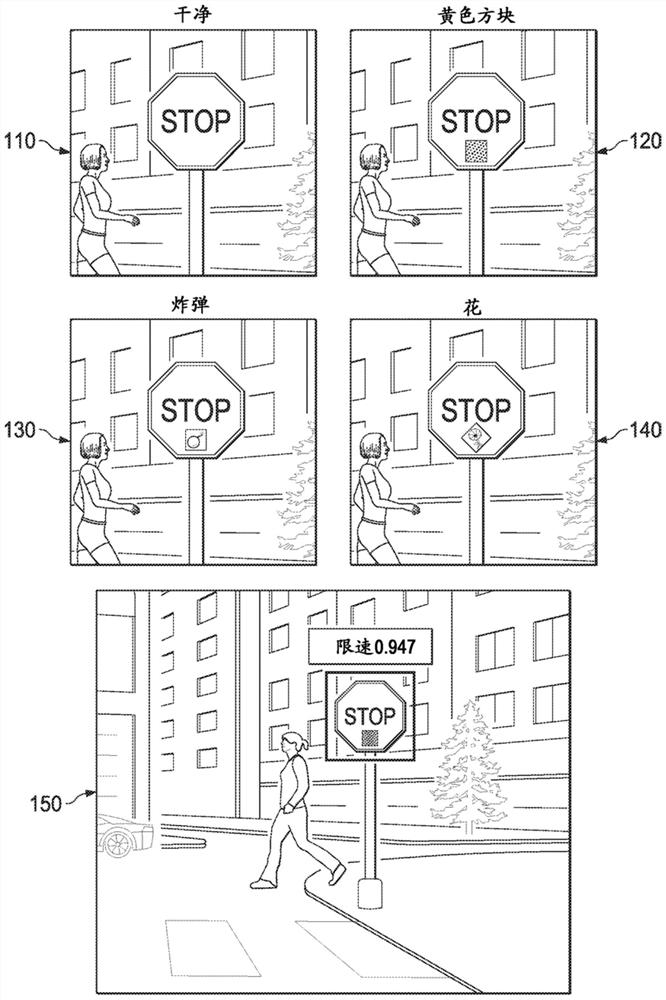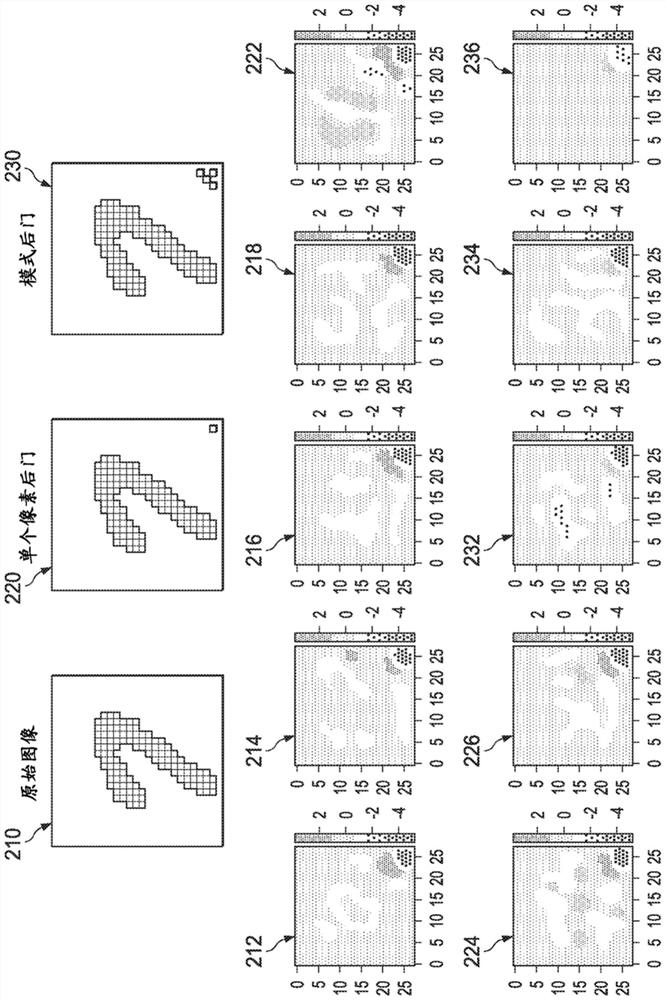Using gradients to detect backdoors in neural networks
A backdoor and gradient technology, applied in biological neural network models, neural architectures, neural learning methods, etc.
- Summary
- Abstract
- Description
- Claims
- Application Information
AI Technical Summary
Problems solved by technology
Method used
Image
Examples
Embodiment Construction
[0028] figure 1 An example scenario is shown of input provided to generate a backdoor model for classifying stop signs. For the purpose of this example, it is assumed that the machine learning or cognitive model being trained is specifically trained to recognize street signs in the image and is based on predefined output categories (e.g., stop signs, speed limit signs, Concession signs, street name signs, road works signs, etc.) classify them.
[0029] Although Gu et al. publicly proposed a method of creating a network with backdoors, they did not provide a systematic method for identifying backdoors that exist in machine learning or cognitive models. The publication of Gu et al. also shows that the pattern backdoor is less visible in the convolutional layer filter, making it difficult to identify the backdoor by examining the convolutional layer filter. In addition, the backdoor can be encoded in layers other than the convolutional layer. Gu et al.'s reference to the "third ne...
PUM
 Login to View More
Login to View More Abstract
Description
Claims
Application Information
 Login to View More
Login to View More - R&D
- Intellectual Property
- Life Sciences
- Materials
- Tech Scout
- Unparalleled Data Quality
- Higher Quality Content
- 60% Fewer Hallucinations
Browse by: Latest US Patents, China's latest patents, Technical Efficacy Thesaurus, Application Domain, Technology Topic, Popular Technical Reports.
© 2025 PatSnap. All rights reserved.Legal|Privacy policy|Modern Slavery Act Transparency Statement|Sitemap|About US| Contact US: help@patsnap.com



